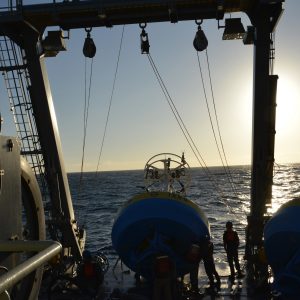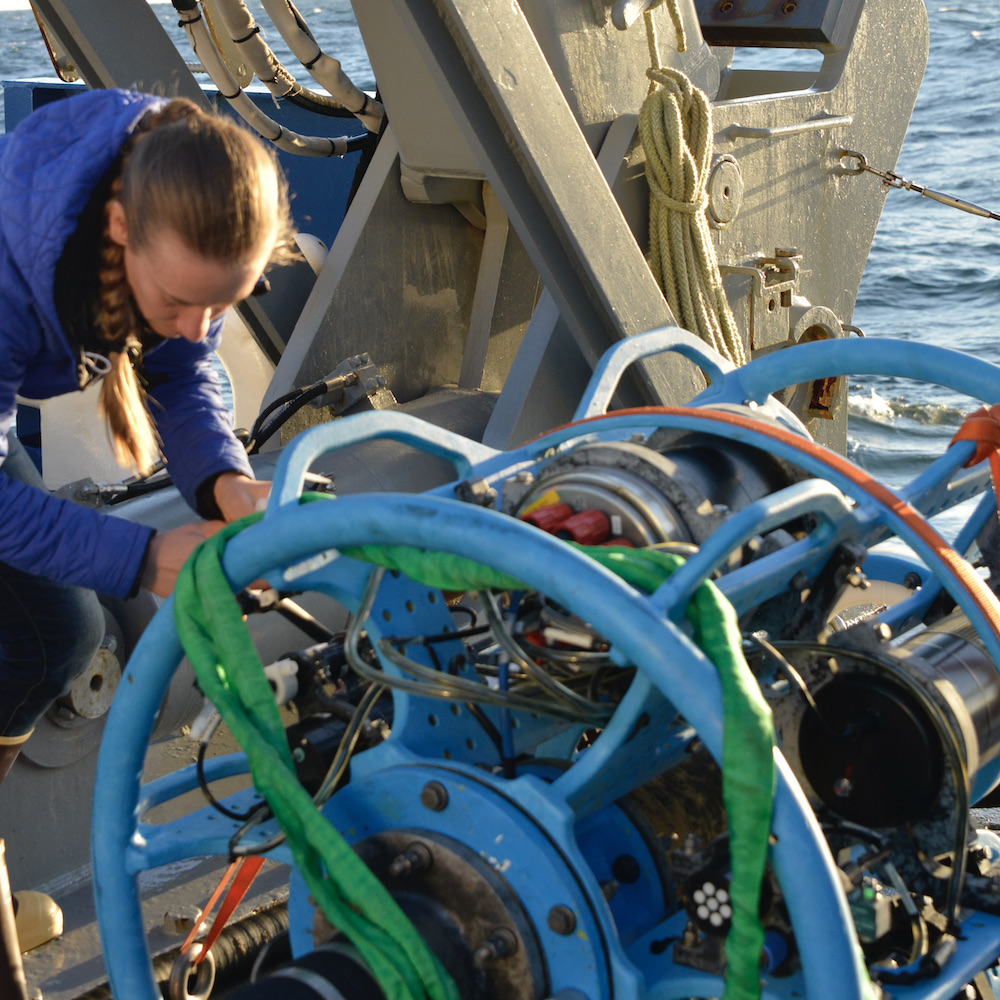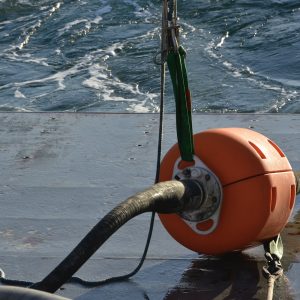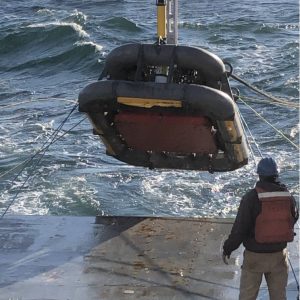Another Mooring Dispatched

The ship starts ~2 nautical miles away from the planned location and drives toward the target site slowly as the mooring is deployed off the stern. The surface buoy is the first things to go into the water.
Today was a gift for early risers. The sun was bright, the weather comfortable. This was fortuitous, for the team was on the stern deck of the R/V Neil Armstrong as the sun rose at 6 am. They diligently worked to finish attaching the various parts that ultimately comprise the Inshore Surface Mooring (ISSM). Deployment of the mooring began at 8 am, as planned.
During the actual deployment, the work was like a choreographed dance, with each player moving gracefully from one task to another seamlessly. They work together like a well-oiled machine.
The following video and images provide a sense of the number of steps in this endeavor.
Images and Text by Darlene Trew Crist©WHOI.

Below the buoy is the Near Surface Instrument Frame (NSIF),which holds instruments that measure dissolved oxygen, water temperature, conductivity, depth, fluorescence, photosynthetically available radiation and turbidity (clarity) of the water. Technician Jennifer Batryn gives the NSIF a final check before deployment.

The buoy and NSIF are connected to the Multi-Function Node and anchor with 3 stretch hoses with buoyant orange spheres in between. The stretch hoses contain electrical conductors which allow power and data to flow to the instruments on the seafloor, but are “stretchy” to accommodate ocean conditions such as waves and swell.

The last portion of the mooring to be deployed is the Multi-Function Node.It holds numerous instruments and the 7000 lb anchor (orange component in the center). It is lowered to ~30 meters above the seafloor, then dropped into place.
Images and Text by Darlene Trew Crist©WHOI.